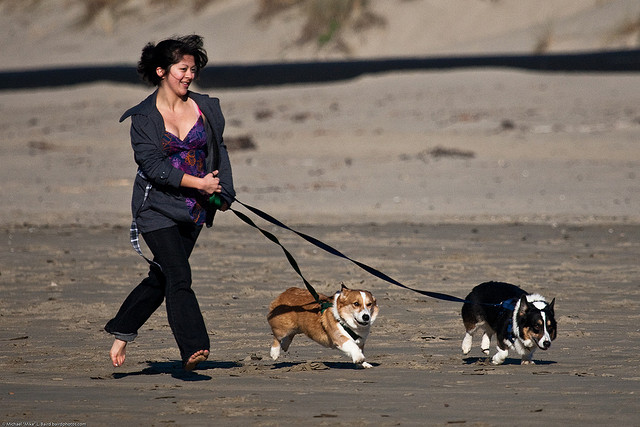
The Importance of Dog Exercise
In a world where only the fittest survive, are you ensuring your dog is fit?
Daily dog exercise offers several benefits according to the ASPCA:
- Reduces behavioral, digestive, and health issues
- Increases confidence and happiness
- Helps with weight control
Regular exercise leads to better overall fitness and health for your dog. However, there are right and wrong ways to introduce physical activity. Below are five common mistakes to avoid when exercising your dog.
Benefits of Regular Dog Exercise
Regular exercise is crucial for maintaining your dog’s overall health and well-being. Here are some key benefits:
- Improved Physical Health: Regular exercise helps maintain a healthy weight, reduces the risk of obesity, and strengthens muscles and joints.
- Mental Stimulation: Physical activities combined with mental games can prevent boredom and reduce anxiety, leading to a happier dog.
- Behavioral Improvements: Dogs that get regular exercise tend to have fewer behavioral issues, such as excessive barking, chewing, or digging.
- Socialization: Regular walks and playtime with other dogs improve your pet’s social skills and confidence.
- Enhanced Bonding: Exercising with your dog strengthens your bond and builds trust, making your relationship more rewarding.
Common Mistakes in Dog Exercise and How to Avoid Them
Tailor Dog Exercise to Breed, Age, and Physical Abilities
Many dog owners mistakenly believe that more exercise always leads to better health. However, the amount and type of exercise should be tailored to your dog’s breed, age, and physical abilities.
- Different breeds have different exercise needs. For example, a chihuahua doesn’t need the same amount of exercise as a German Shepherd.
- Over-exercising can lead to injuries, especially with activities like long-distance running.
Signs of overworked dogs:
- Sore and sensitive pads
- Extended periods of fatigue after exercise
- Heat exhaustion
Ensure Sufficient Dog Exercise
According to the Association for Pet Obesity Prevention, 52.5% of dogs in the U.S. were considered overweight or obese in 2012. Lack of exercise contributes significantly to this issue.
- All dogs, regardless of breed, size, or age, need daily physical activity.
- Regular exercise helps control weight and improve overall health.
This video reinforces the important aspects of exercising your dog properly:
Consider the Exercise Environment
Your dog’s exercise environment is crucial for their safety and health.
- Cold environments can cause frostbite.
- Hot environments can lead to burns and heat exhaustion.
- Dangerous debris like broken glass and jagged concrete can cause injuries.
Tips for exercising in various environments:
- Avoid exercising in extreme temperatures.
- Walk your dog in the early morning or evening to avoid heat.
- Monitor air quality, especially in polluted cities.
Stay Focused During Dog Exercise
Distractions can compromise the safety of your dog during exercise.
- Pay attention to your dog during walks to prevent accidents.
- Avoid using your phone or engaging in long conversations.
Include Mental Stimulation in Dog Exercise
Exercise should not be purely physical. Mental stimulation is also important, especially as your dog ages.
- Mental games can boost your dog’s brain health. According to Modern Dog magazine, mental stimulation is crucial for older dogs.
- Combine physical activities with brain games like obedience training, fetch, and hide-and-seek.
Regular dog exercise, combined with mental stimulation, ensures your dog remains healthy, happy, and fit.
Best Way to Keep Your Dog Fit and Happy
Looking for a way for you and your dog to get healthy together?
Check out the FitBark 2, the highest-rated dog health monitor on the market. It’s a small, colorful device that you attach to your dog’s collar.
The FitBark 2 monitors:
- Activity levels
- Quality of sleep
- Distance traveled
- Calories burned
- Overall health and behavior
With a 6-month battery life, you can focus more on bonding with your pup and less on recharging. The FitBark 2 fits dogs of any size and is water-friendly, just like your dog!
Frequently Asked Questions (FAQ)
How much exercise does a dog need?
Most dogs need between 30 minutes to 2 hours of exercise daily, depending on their breed, age, and health.
How to exercise your dog?
Exercise your dog through daily walks, playtime, fetch, and incorporating mental stimulation activities like obedience training and puzzle toys.



